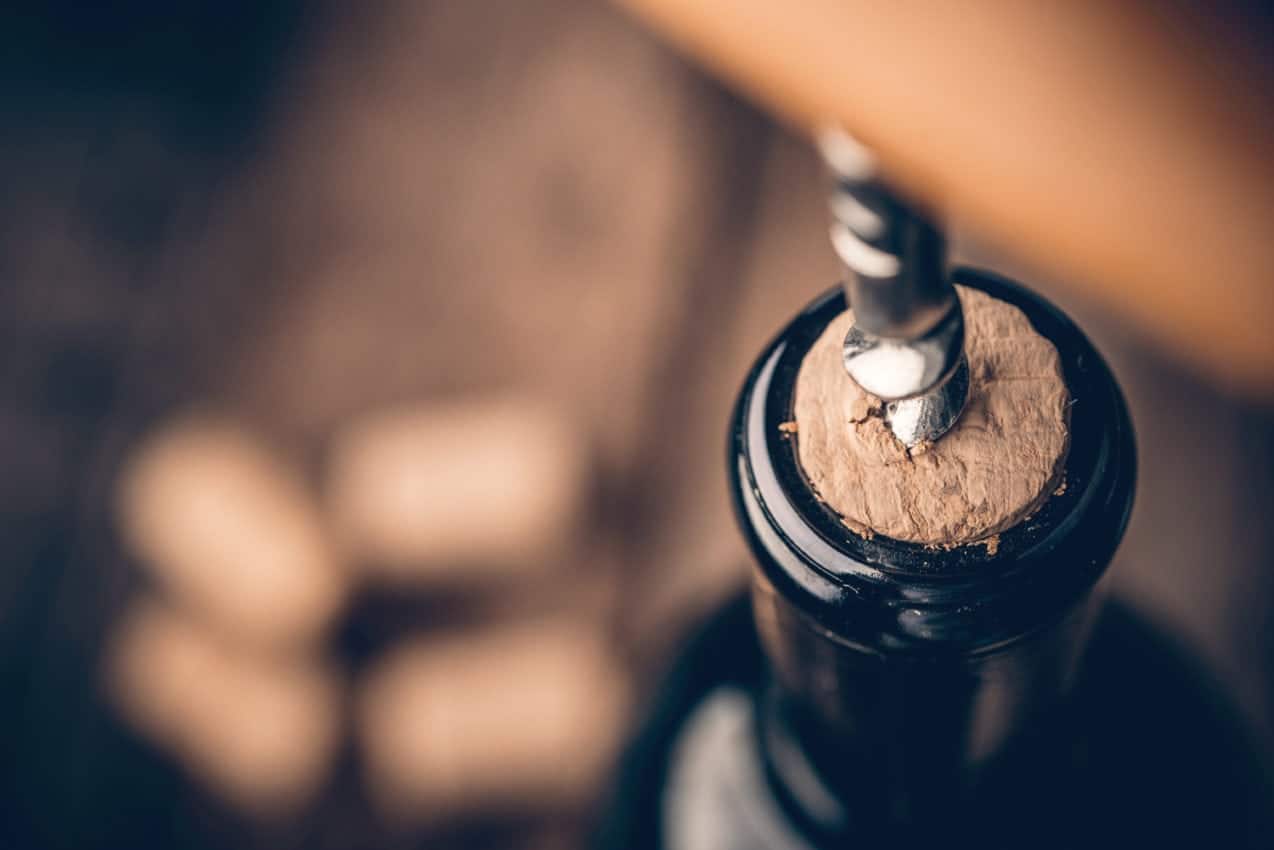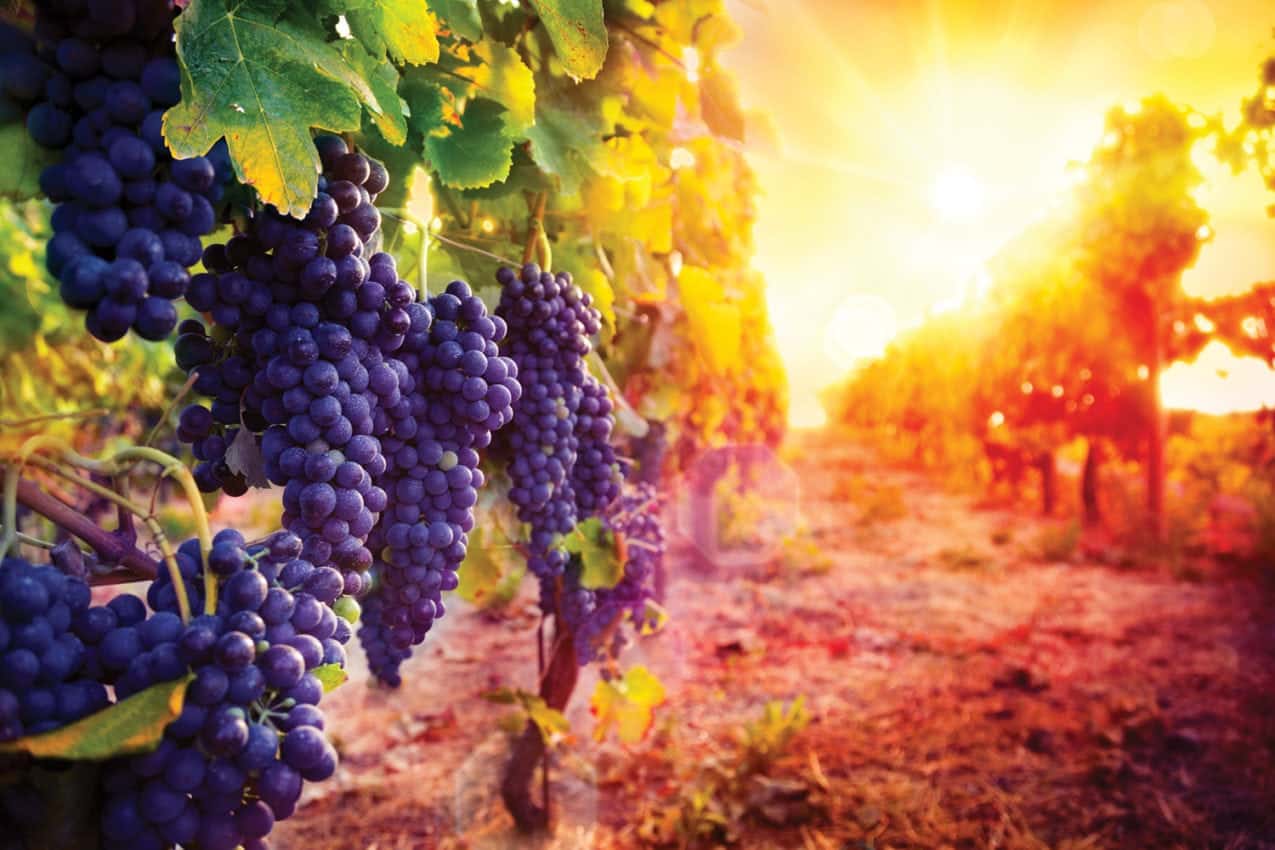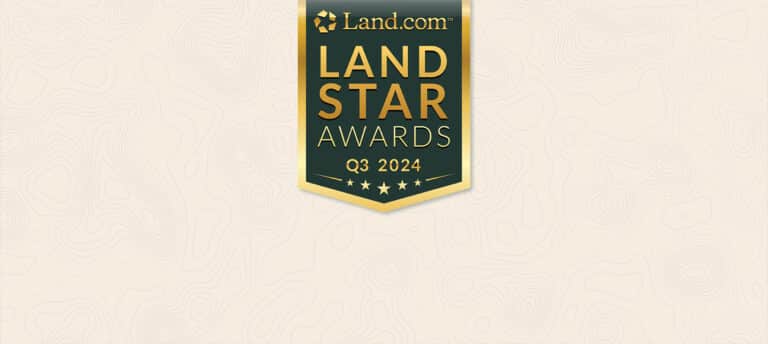If you keep abreast of wine developments in the press, you’ll have noticed the latest trend polarizing opinion in the wine world: Natural wine.
Natural wine is real wine, made from just healthy grapes and happy yeast. It’s an authentic expression of nature. All natural wines are farmed organically or biodynamically, dry farmed, free of chemical sprays, free of additives, and fermented with native yeast. It’s wine that is naturally grown and naturally made.
Natural growers embrace the wild cards inherent in nature.
Back to the beginning
Today the natural wine scene is exploding with wine growers across the world, from the US and New Zealand to lesser-known regions like Slovenia, Georgia and Serbia. Tastemakers in Paris, New York, San Francisco and Tokyo are mad about the movement—and trendsetters in London are now close on their heels.
It may seem like natural wine is the new kid on the block. In a sense, that’s true. But, natural wines have existed since people began making wine 8,000 years ago. Early winemakers didn’t have packets of yeasts, vitamins, enzymes, Mega Purple, reverse osmosis, cryoextraction or powdered tannins. They had crushed grapes and native yeast that fermented into wine.
The natural wine movement, which is actually a return to the traditional origins of winemaking, is a relatively new phenomenon. It arose with the collective realization that winemaking and viticulture were moving toward industry and away from the land. Although there are proponents of natural wine around the globe, the most vocal advocates of “returning to the vineyard” are located in France and Italy, the Old World bastions of winemaking.
Read more: Q&A with Dry Farm Wines Founder Todd White
While advancements in technology and winemaking science mean we now understand wine in a way in which our ancestors might not have, we seem to have lost perspective. Today, winemakers use science and technology in an attempt to control every step from growing the grapes to fermentation. This may mitigate risk, but it removes the most important component of winemaking out of the equation: nature.
Natural growers, on the other hand, embrace the wild cards inherent in the natural world. They’re committed to nurturing biodiversity while embracing and observing nature, rather than fighting to control it. They minimize intervention in the cellar. There is, for example, no rectification of sugars or acidity, no addition of yeasts and no removal of excess dilution in a wet vintage. The wines are an unedited representation of a piece of land in a particular year.

The movement
In the 1980s, a small movement in the vineyards and cellars of central France began gathering force: fresh-tasting wines low in alcohol, high in acidity and fruitiness, made in small quantities (enough to fill only a few hundred bottles) were appearing in ever greater numbers throughout Parisian restaurants and wine bars.
These wines, which defied industry ideals, were referred to as “wild” and “alive” by both producers and drinkers alike. These wines often boasted at least one (by more standard palates, anyway) fault—a telltale barnyard aroma granted by the otherwise maligned brettanomyces (Brett) yeast. Around the 1990s, these bottles slowly began making their way into the United States.
Taking a stand on yeast and sulfur
France’s move toward less manipulated wine “started with rejection of chemical agriculture,” said David Lille, who honed his palate in France during those days and is now a partner in New York’s Chambers Street Wines, a wine shop lauded for its small producer selections. “Most of these people were rejecting inoculated yeast, but they weren’t necessarily anti-sulfur.”
Inoculated yeast is the practice of adding (crushed grapes) to start fermentation. Opposing this process went hand in hand with an increased reliance on wild, or ambient, yeasts. These sugar-loving airborne organisms are present everywhere. Each location around the world, from Burgundy, France to Burgenland, Austria, has its own profile of wild yeasts that naturally flock to grapes and grape juice initiating fermentation spontaneously.
Depending on one’s taste, these “living” wines were a radical turn from more commercial wines.
“Some of the producers were not that careful. ‘We don’t care how it tastes,’ was the attitude. If it tasted bad it was a badge of honor; it was funky. The most important thing was that the wine be natural,” Lillie said.
Inevitably, the movement expanded stateside in the 1990s. It’s true: many drinkers were put off by Brett-induced off-flavors, daringly fruity aromas, and proud displays of what more commercial makers considered faults. But pretty soon, plenty of visitors and expats were hooked on the funky juice, returning home with bottles to share.
”Natural” wine gathers force and meaning
By the mid-2000s, these curious French bottles were well-known among a growing crowd of cognoscenti in the U.S. and elsewhere, a success-driven mostly by word of mouth. They were also being regularly referred to as “natural” wines. As the movement’s better-known winemakers positioned France’s Loire Valley and Beaujolais as the center of it, their devotees slowly discovered more producers in other parts of France and in corners of Italy and Germany who were working in the same way.
When it comes to wines, “natural” is a contested term among winemakers. There’s no official definition, but there are agreed upon guidelines among natural winemakers, sellers, and drinkers, who form a loose community. The grapes must be grown organically or biodynamically, but certification isn’t necessary. The earth is highly irregular when it comes to places that are good for growing vines. For those paying close attention, authenticity and common sense trump labeling.
Natural winemakers share an ethos of “hand-off-ness,” too. Along with using native yeasts, natural winemakers avoid chemical manipulations, additives and, very often, fining, filtration, and added sulfur. Decisions vary from producer to producer and often from vintage to vintage.
Natural winemakers subscribe to honesty and transparency in their techniques. As a result, wine became a true expression of place, a product of biodiverse vineyards and healthy, yeast-filled wineries. They stand for accessibility, too, and against turning high-quality wine into a commodity.
Natural wines are for the people.
Natural goes global
“I think the same thing that’s going on in the food world, when you have people like Michael Pollan writing about food, people are going to start questioning everything, we’re starting to have that conversation in the same way for wine,” said Lee Campbell, organizer of New York’s The Big Glou natural wine festival.
Demand for sustainability and clean agricultural practices, a new focus on both local flavors and discovery of new ones, and steadily increasing wine consumption in many parts of the world (the U. S. is now the world’s largest wine market), are heralding a second wave of natural winemaking.
“I pretty much never drank New World wines before and I’m starting to enjoy certain New World wines, now,” Campbell said. “It’s kind of strange. I’m excited to see things that are going on in California, and from people in Australia.”

The United States, naturally
In the U.S., more attention is being paid to the American Viticultural Areas (AVAs) that correspond roughly to appellation systems like France and Italy’s, but have far fewer requirements. Plus, an insistence on transparency and experimentation is defining a new branch of winemaking.
In Oregon, Joe Swick, a winemaker who prior to launching Swick Wines with the 2013 vintage only had experience with conventional winemaking. Self-taught when it comes to natural, he takes pride in doing things differently from his more consistency- or profit-minded neighbors. How Zwick makes his wines depends on the characteristics of grapes each year. He sources his fruit from dry farmers who are less than an hour from his winery and handpick the grapes they sell to him so the fruit arrives damage free and suitable for fermenting by native yeasts.
“We get plenty of rain here, the only reasons anyone irrigates is to maximize yield, for cash crops,” he said.
Swick made his first unsulfured wine in 2014 to such acclaim that his entire 2015 line, which includes a Portuguese-style field blend (grapes grown together in one vineyard) with Oregon-appropriate grapes (half pinot noir and half pinot gris), is 100 percent “naked.” He prefers “naked” to “natural” as a descriptor for the un-manipulated wines.
Naturally grown and made
Natural wines are organically or biodynamically grown by small family vintners. This means no added pesticides, herbicides, fungicides or other chemicals. The use of chemicals has grown 2,600 percent in the last 50 years. Monsanto’s Roundup®, which has been linked to numerous cancers worldwide, is the most widely used herbicide in U.S. vineyards today. Organic farms provide sustainability for the soil and biodiversity in the vineyard.
Dry-farmed vines are watered with rainfall, while irrigated vines are sustained using drip irrigation and water from aquifers or surface sources. Dry farmed plants have roots that grow up to 50 feet deeper than irrigated plants, making them heartier as they search for a deep water shelf for nourishment. Dry farming also saves 16,000 gallons of water per acre.
All natural wines come from sustainable winemakers whose practices return nutrients to, and sustain microorganism in, the soil. These wines reflect nature’s design, and they enrich the natural world instead of destroying it. Sustainable winemaking means lower yields and a longer growing and aging process, but the exquisite end result is worth the investment patience.
In addition, the FDA approves 76 different additives for use in winemaking including metals, toxic chemicals, sugar, fish bladders and more. Natural wines contain none of these.


